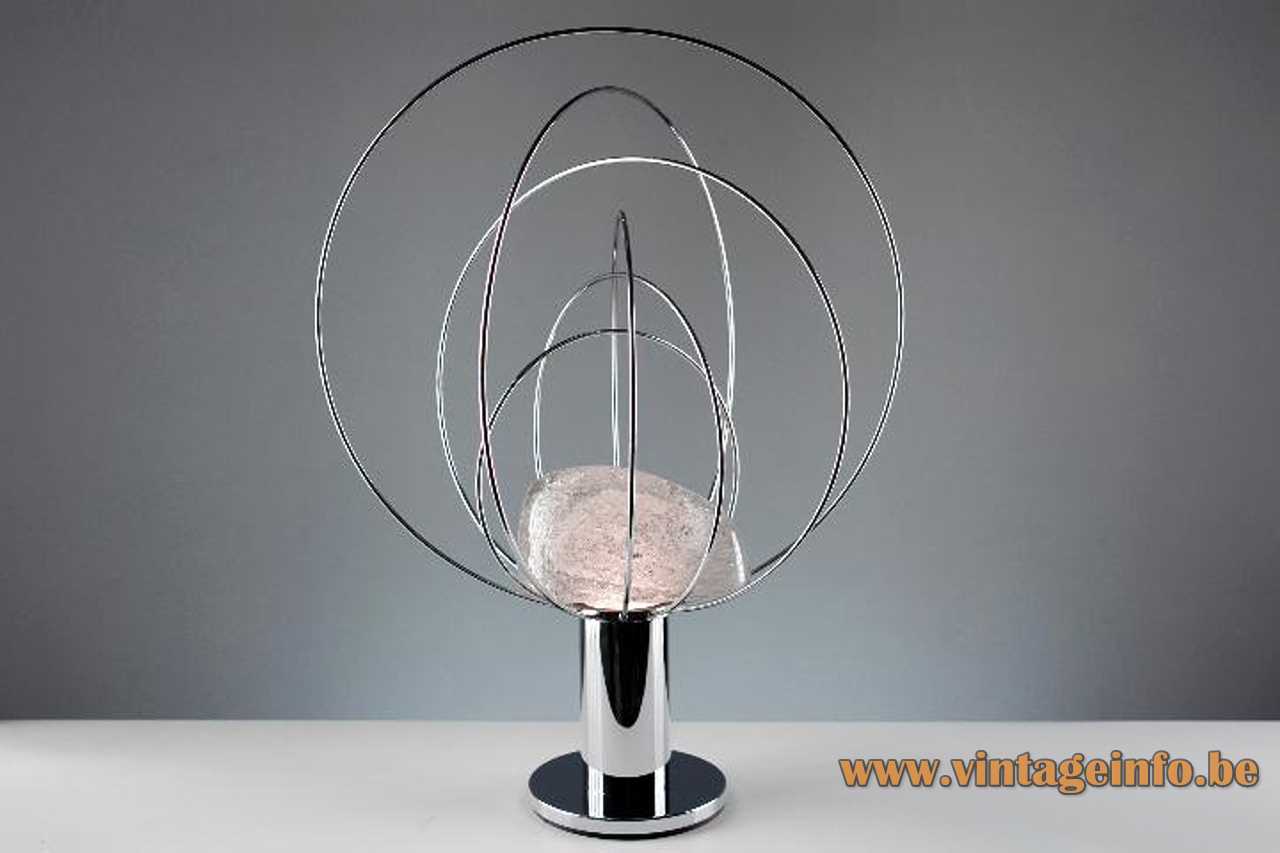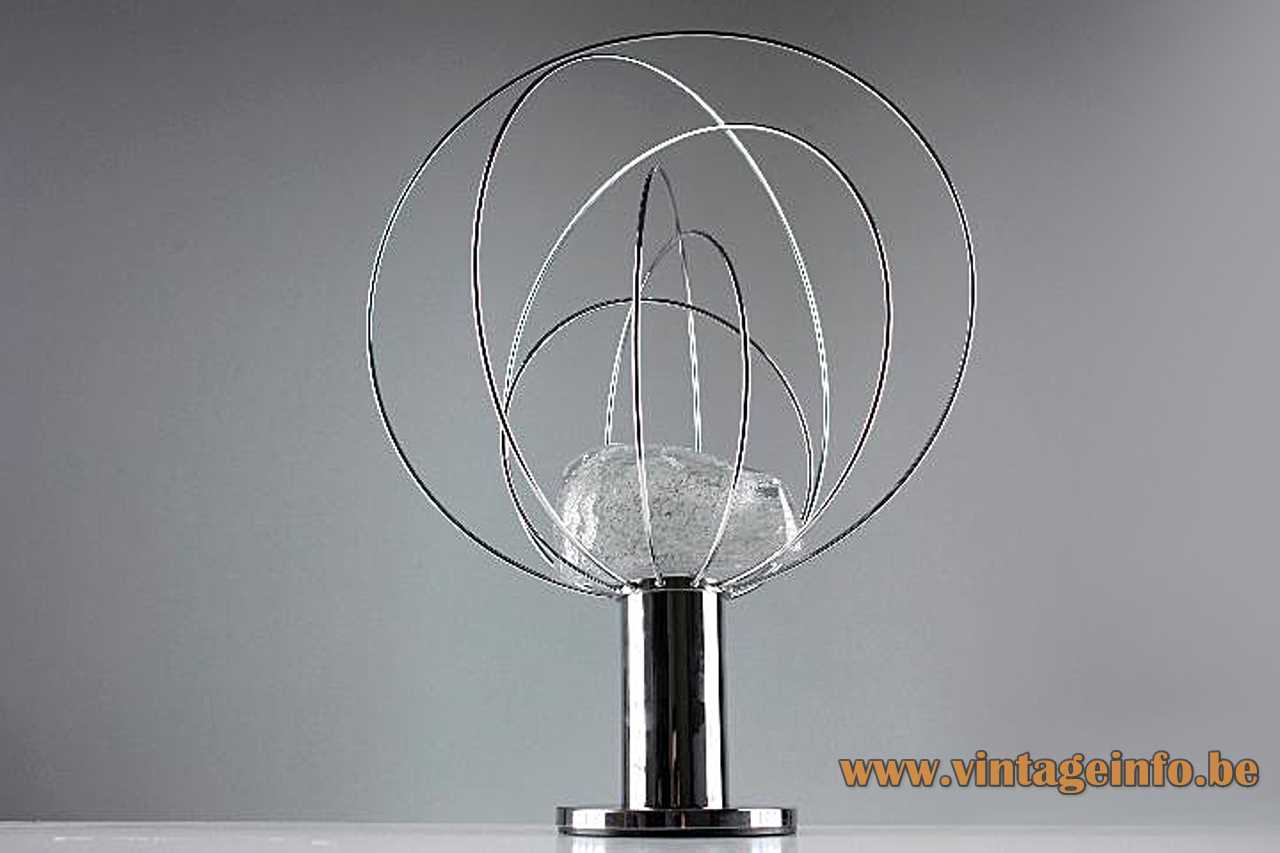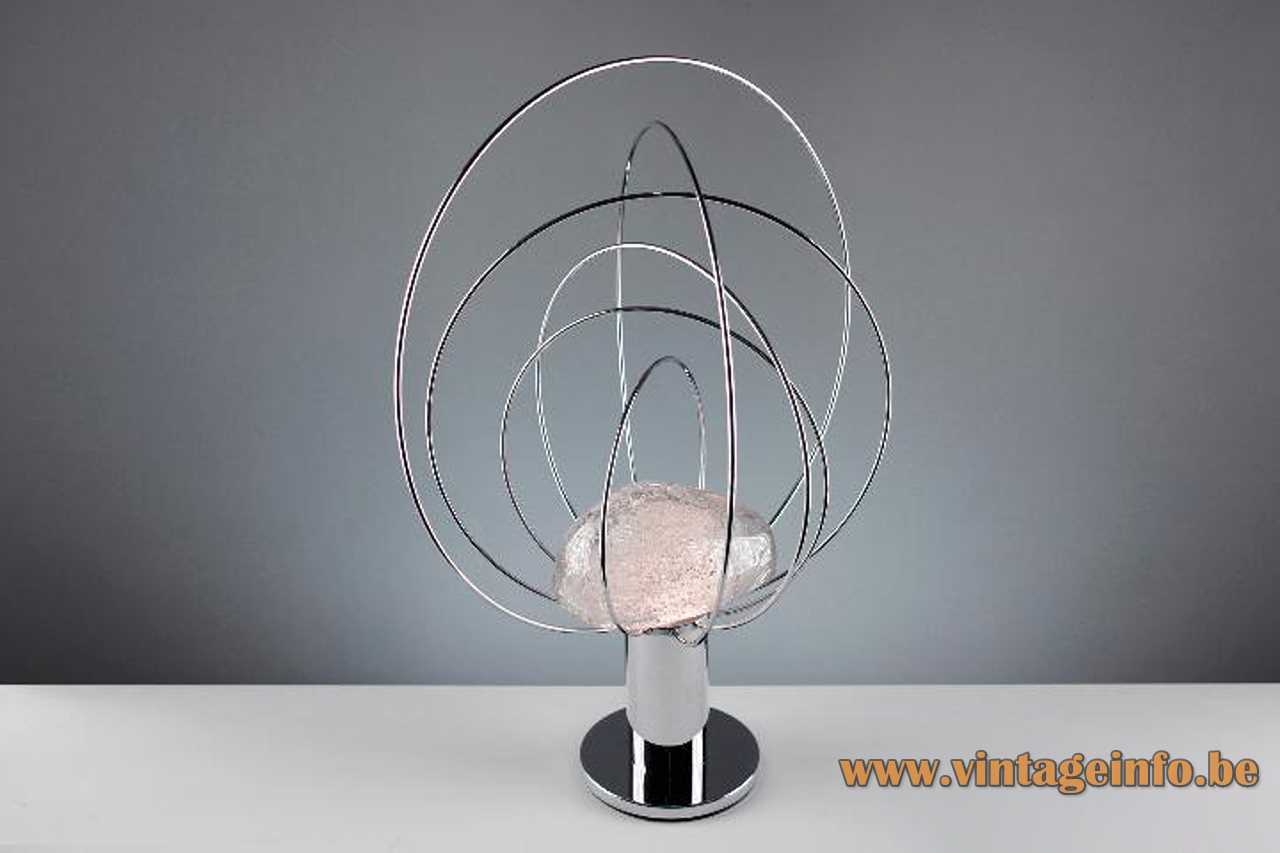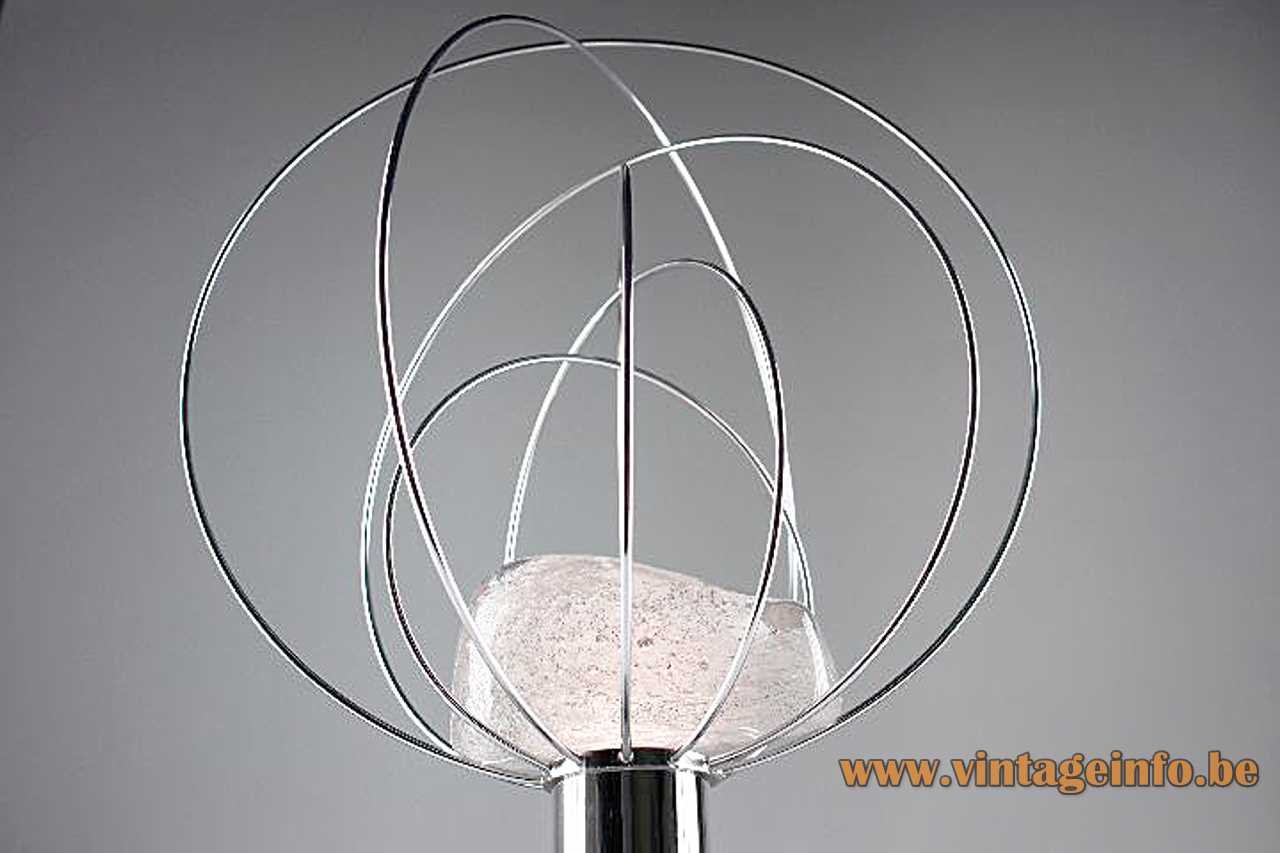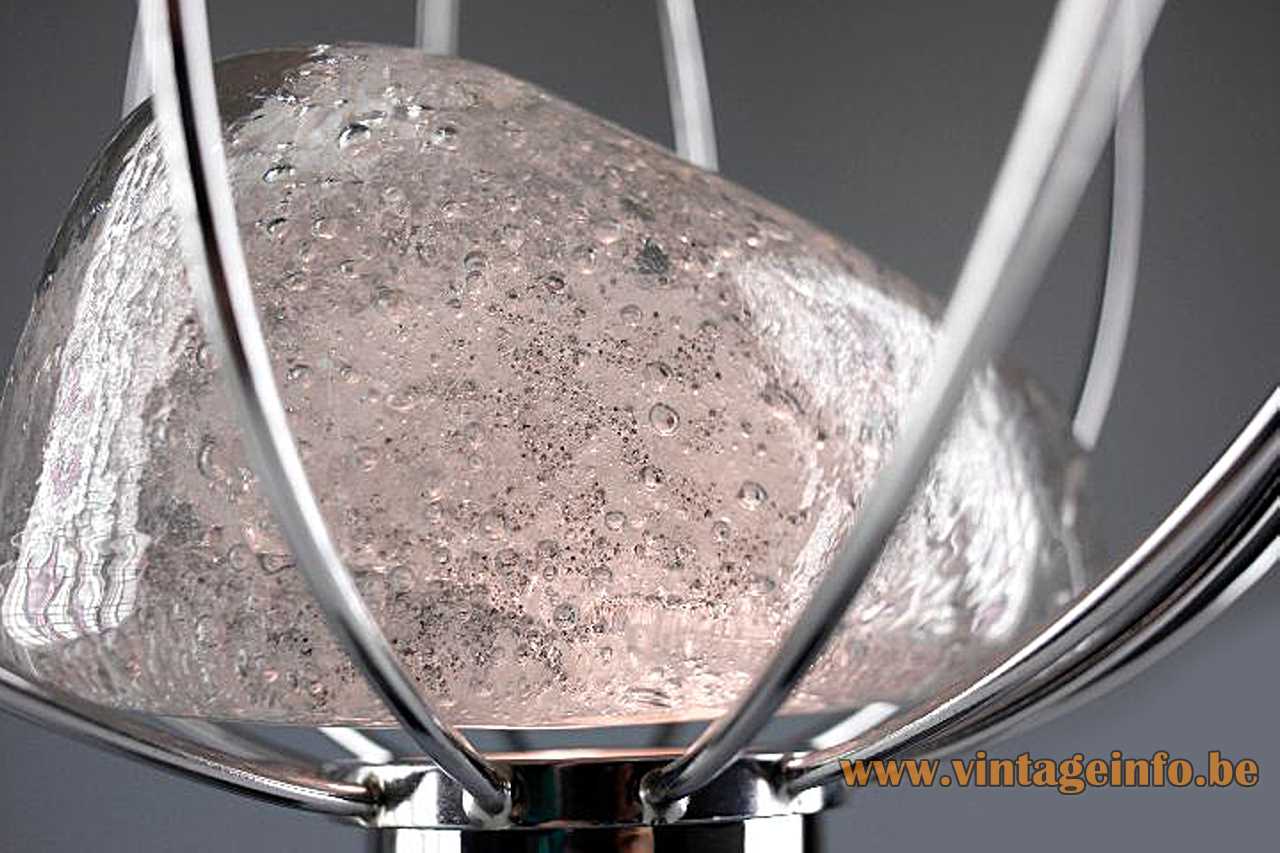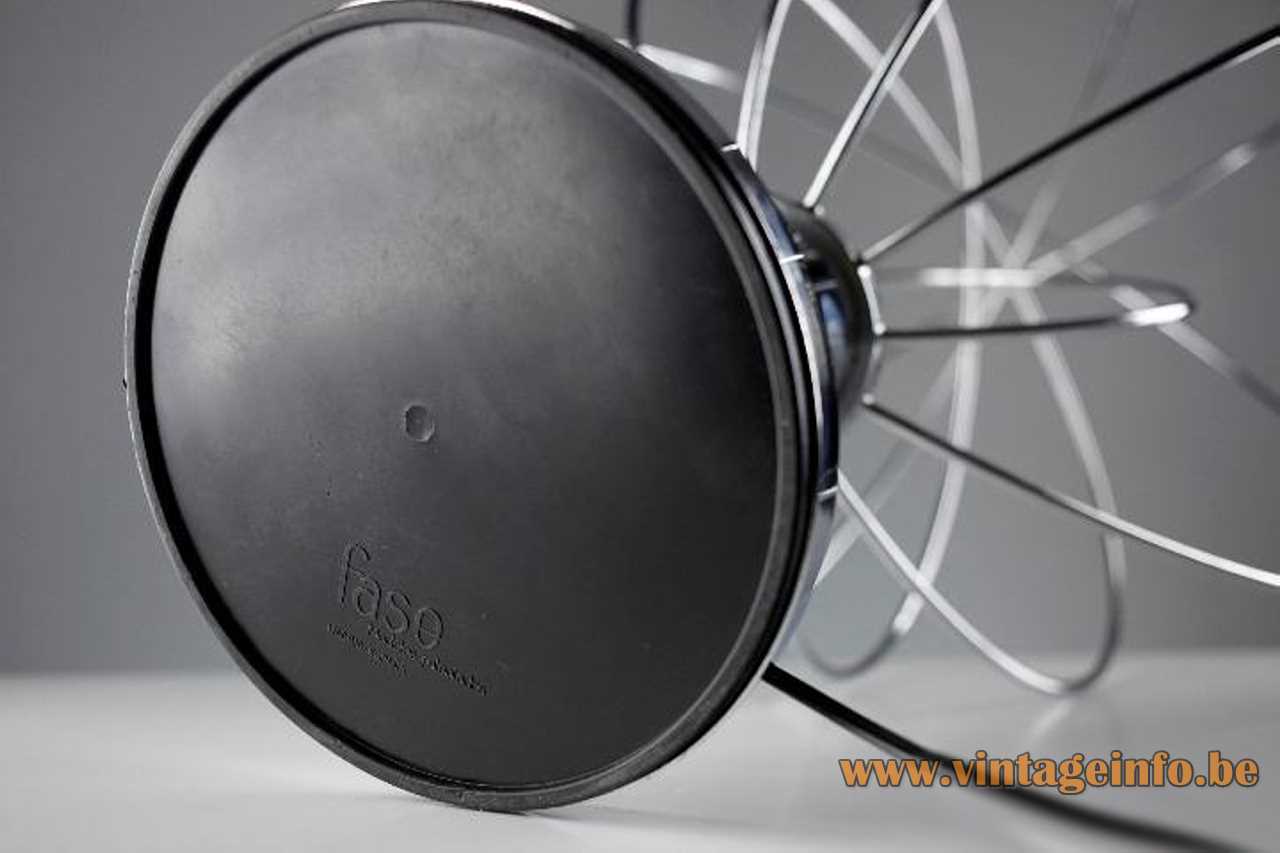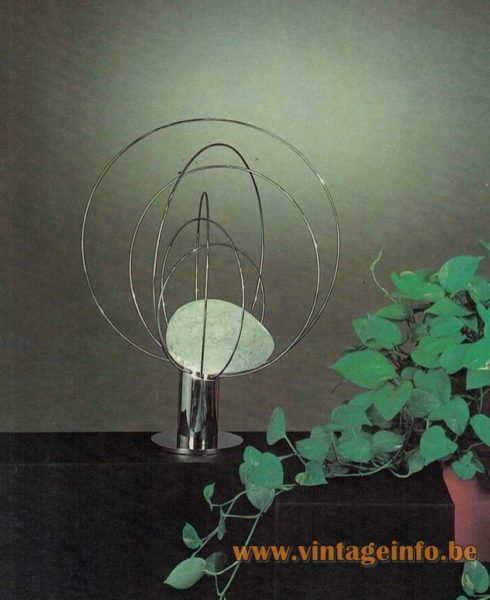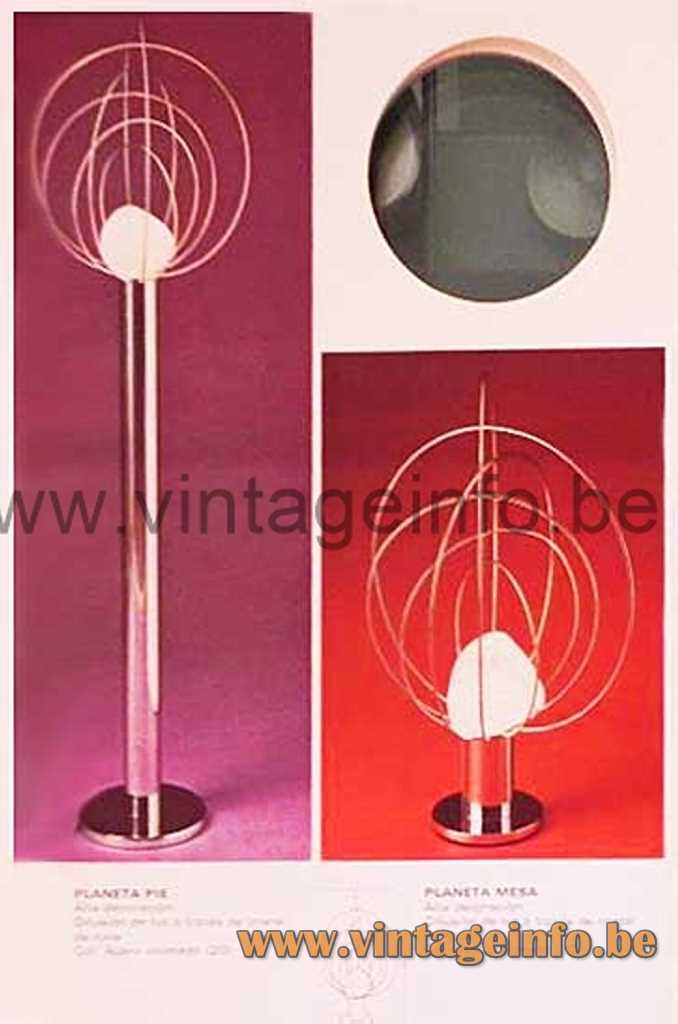Angelo Brotto Barnaba Table Lamp
Materials: Round chromed metal base (iron) and tube with 6 chrome wire circles, rings in different sizes. A handmade Murano crystal glass stone with bubbles inside (pulegoso). The rock is lies on top of the light source. Bakelite E14 socket.
Height: 60 cm / 23.62”
Width: ∅ 50 cm / 19.68”
Base: ∅ 20 cm / 7.87”
Electricity: 1 bulb E14, 1 x 60 watt maximum, 110/220 volt.
Any type of light bulb can be used. Not a specific one preferred.
Period: 1970s – Mid-Century Modern.
Designer: Angelo Brotto in 1974.
Manufacturer: Esperia, Via Campania, 1D, 53036 Poggibonsi, Italy.
Other versions: This Angelo Brotto Barnaba table lamp exists in chrome and brass. It was also produced as a floor lamp. This lamp was made by Esperia for the Spanish Fase. Fase named it: Planeta.
This Angelo Brotto Barnaba table lamp was designed in 1974. It appears in a Fase catalogue from 1976. Today (2019) it is back in production by Esperia.
Angelo Brotto
Born in Venice, Italy in 1914, died in Campiglia Marittima, Italy in 2002. Angelo Brotto graduated on the art school of Venice in 1939 and already at that time he participated with his works in different exhibitions.
Brotto graduated in 1941 on the Academy of Fine Arts in Venice distinguished himself by winning all competitions. He won many prizes for his outstanding works in the years that follow.
In Italy his works have been acquired by the Gallery of Modern Art in Rome and Venice, by the Rivoltella Museum in Trieste, by the Venice Biennale, by the Ministry of National Education, by the Confederazione Italiana professionisti ed artisti and by private galleries around the world.
Esperia
The Esperia company was founded in 1952, with the aim of producing chandeliers, table lamps, wall lamps, floor lamps, ceiling lights, wall light panels and furniture. Esperia is famous for the Quasar lamp from the 60s and 70s, designed by the Venetian designer/professor Angelo Brotto. Brotto designed many beautiful lamps for Esperia in that period. The Esperia company still exists and they produce very beautiful lighting.
Pulegoso
Italian word taken from the dialect word pulega, which means bubble. The glass is containing numerous bubbles of all sizes, produced by adding bicarbonate/soda, gasoline, or other substances to the glass. The bubbles make the glass semi-opaque and give the surface an irregular texture. The technique was developed in the 1920s by Napoleone Martinuzzi (1892-1977) on the island of Murano, Italy and used for the first time by the famous Venini company.
Fase
The Fase company was founded by self-made man Pedro Martin and designer Luis Pérez de la Oliva in 1964, some sources say 1966. The Boomerang lamp was one of their first designs. Initially they sold their self-produced lamps to the markets in and around the capital Madrid before successfully opening a factory in Torrejón de Ardoz on the outskirts of the city.
They produced mainly lamps, but also ashtrays and other products such as office bins and coat racks.
Fase supplied many lamps to the offices of General Franco‘s dictatorial government and the Guardia Civil, some sort of military police. From 1975 on, after the death of Franco and the end of the regime, Fase started with Italian Modern and Bauhaus-inspired designs. The Spaniards were unfamiliar with this design because of the Franco regime that ruled the country with an iron fist and allowed few foreign influences.
During the 70s Fase exported lamps to Belgium, The Netherlands, Luxembourg, Great Britain, Norway, France, Italy, Germany, Portugal, United Arab Emirates, Japan, Hong Kong, Morocco, the United States and Canada. In total in more than 32 countries.
1980s
In the 1980s Fase jumped on the bandwagon of the halogen lighting. The break with tradition proved unsuccessful and ultimately contributed to the end of the business. A large fine of the Treasury in the early nineties for tax irregularities was the end for Fase. The company was officially dissolved in 1996.
Drowned, the company sold its manufacturing license to a German brand, Ma-Of, which slightly modified the original design by adding more chrome. Before these final death rattles, the partners had already separated. Luis Pérez de la Oliva had created his own brand Lupela, another flagship of Spanish design. GEI (Gabinete Estudios Industriales – Cabinet Industrial Studies) was another company that sold similar lamps. Also Massive from Belgium produced a few lamps in this style.
When the company stopped producing them abruptly, there was a lot of ‘stock’ available in the warehouses. That’s why you find relatively many lamps with a label attached. Many lamps are sold new and never used in the box (NOS – New Old Stock).
Links (external links open in a new window)
New Barnaba table lamp – Esperia website
Academy of Fine Arts in Venice
Vintageinfo
Striped purple glass chandelier
Many thanks to Lluís from Eclectique Vintage for the photos and the enthusiasm.
